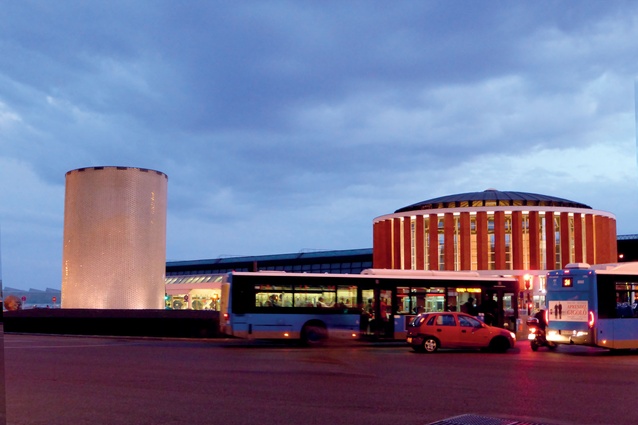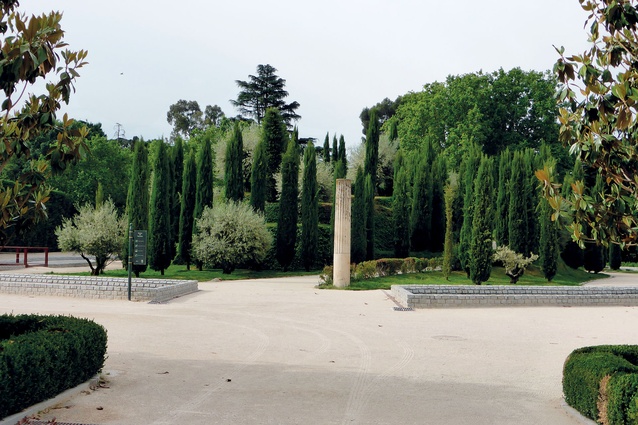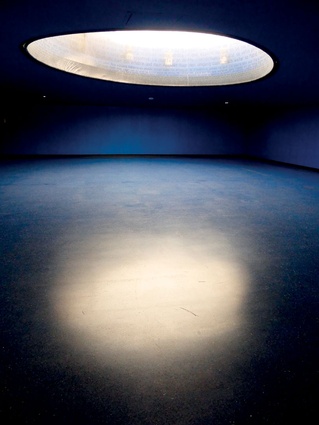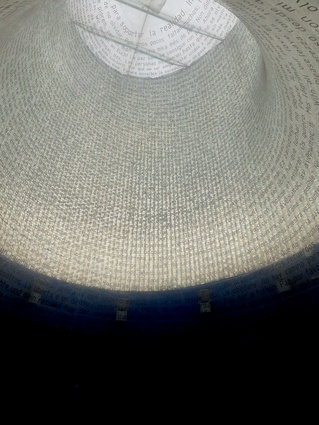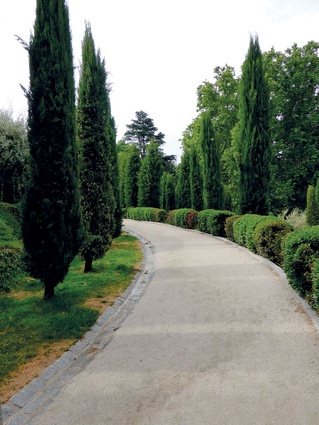Landscapes of memory
Two strong forms dominate the history of memorial design – the garden and the monument. The sacred groves in ancient Greece were gardens and forests dedicated as places for remembering. Including spaces for worship and ritual, sacred groves were set apart from the day-to-day world. In contrast to gardens, monumental stone structures were also found in ancient times, including tomb-like structures in classical Greece to commemorate war victories, inscribed with the names of the dead.
The contrast between these two forms – one based on the qualities of plants and growth, and the other on the sense of permanence from earth and stone – sets up a sustained dialogue on memorials, which continues today. Interestingly, Amy Waldman’s thought-provoking novel about the competition for New York’s 9/11 memorial, The Submission (2011), has a key thread, which pits two design entries against each other: The Garden and The Void. Plot spoiler: it is revealed that the final entry selected, The Garden, is the work of a Muslim entrant, with the novel insightfully delving into debates over design competitions, politics, religion, and the very nature of memorial design.
This dialogue between these two very different but potent forms finds unique expression in Madrid, where the victims of the 2004 train bombings are remembered with both a monument and a garden. With a death toll of nearly 200, the multiple bombings on Madrid’s rail system were the work of suicide bombers. An international design competition for a site on a traffic island next to the Atocha station was launched in the year following the bombings and attracted 289 entries, with the entry by FAM Studio emerging as the winner.
The winning design was inaugurated on the third anniversary of the attacks, on 11 March 2007, and its prominent location in the middle of busy roads next to the station gives it a high profile within the city. The translucent drum made from curved glass blocks is 11 metres high, and is a strangely ghostly form within the city. There is no invitation to interact with this above ground component, as even if you manage to make your way through the traffic, there is only an extremely narrow ledge to stand on – and no protection from the cars negotiating the busy roundabout. At first this seems strange, a memorial that can’t be approached, preventing the leaving of flowers and mementoes. But the key to the memorial is below ground, in the railway station itself.
Amongst the cacophony of announcements, and the ebb and flow of commuters pushing through the subterranean station, there is an unassuming door with a sign reading 11M, the name given to the 11 March bombings. When I first visited in the late afternoon it was already closed for the day and wouldn’t open again until 11am the next morning, which again seemed odd – that a memorial could be closed. On returning the next day I was ushered into the large blue room, where the light from the above ground drum pours into darkness. The emotion immediately hits you, amplified by being left alone in the silence. Looking up into the drum, the polymer surface is covered in texts in a range of languages, words gathered from the notes that were left at the bombing sites. It is not easy to reconcile the outward form with the interior space, because they sit in such different realms – one marooned in the chaotic traffic above, and the other a subtle element in the prosaic surroundings of the train station.
The second memorial, the garden, is in El Retiro Park, only 500 metres, as the crow flies, from the high profile monument at the Atocha station. This is Bosque del Recuerdo, the Forest of Remembrance, a small hill surrounded by water. Once a royal park, El Retiro (or Parque del Buen Retiro in full – Park of the Pleasant Retreat), is a large green space filled with planting and a wide range of buildings and water features. The Forest of Remembrance has carved out its own space within the gardens, with the hill planted with olives and cypress, and a gentle spiral path that takes you to the summit. The view from the hill is of the surrounding park, immersed in greenery, and very conducive to silence and reflection. There is little information about this memorial, which was dedicated on the first anniversary of the bombings. The symbolism of the hill with its spiral path, the tree species, and the water moat, echo the legacy of gardens as places of memory, a modern sacred grove.
Like the garden and the void in Waldman’s book about the 9/11 memorial in New York, Madrid’s two memorials give expression to the enduring ideas of forms for remembering. These two sites in Madrid remind us of the continuing dialogue over memorial expressions, along the way grappling with contemporary issues surrounding how the victims of terrorism should be remembered. Reading Madrid’s memorials in the context of this legacy, as well as within the frame of Waldman’s novel, reminds us of the potency of design to connect us to an extensive history, and to negotiate the treacherous terrain of the 21st century city.

